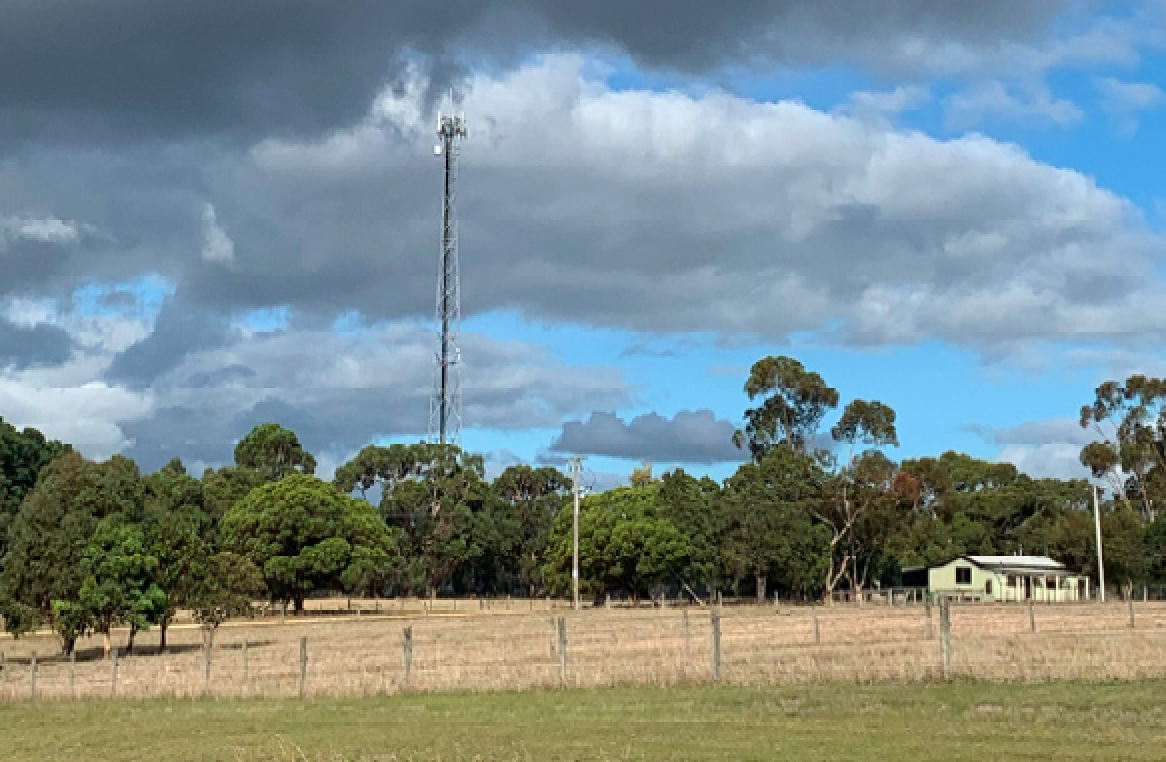Mobile networks
Download a printable version of this page: Mobile networks ![]() [PDF File - 695.3 KB]
[PDF File - 695.3 KB]
A network that connects devices and sensors to offer near real time information for improved decision making on farm.
How does it work?
Mobile networks, also known as cellular networks, are made up of a series of base stations or mobile phone towers. These base stations relay wireless signals that allow devices to connect, transmit and receive data. Mobile networks include Cat M1- an example of LongTerm Evolution (LTE), third generation (3G) and fourth generation (4G).
Communication through the network can include data, voice, multimedia (images or videos) and SMS.
 Why do I need it?
Why do I need it?
- Networks offer the ability to connect devices, such as water storage meters, to make data available via the internet. This provides feedback about what’s happening on farm and is especially useful for monitoring remote paddocks or giving you peace of mind when you’re not at home.
- Mobile networks are particularly important on farms where there are no other networks (such as LoRaWAN) available or practical.
- Mobile networks can transfer large amounts of data over long distances (think video calls abroad). However, this data transfer can be expensive.
- Mobile networks are simple to use, requiring a SIM card to connect a device to an existing network. In contrast a LoRaWAN network requires purchasing or hiring a LoRaWAN gateway and connecting the gateway to the internet. These gateways can only send small packets of data and are unable to receive data. This makes it harder to update software on devices if required.
How is it used?
Farmers in the South West Victorian demonstration are using mobile networks to…
- Connect water sensors to tanks and troughs to check water levels.
- Connect weather stations and soil moisture probes as they investigate the impact of soil moisture on pasture growth rates.
- There are many other potential uses for the mobile networks on farms and this continues to grow as more sensors become available.
Things to consider
- The level of mobile coverage is dependent on having an adequate number of towers in the area. It may not be sufficient in some area to rely on the mobile network for your ag tech devices.
- A node may be required to connect several devices to the mobile network.
- The cost of transferring data via a SIM card for each device or node can make this a costly option.
- The ability to transfer larger amounts of data requires more power, often needing a mains or solar powered connection.
Tech requirements
- Mobile network with adequate coverage in the area.
- Available power.
Where do I find out more?
- https://www.telstra.com.au/coverage-networks/our-coverage
- https://www.optus.com.au/about/network/coverage
- https://www.vodafone.com.au/network/coverage-checker
- https://agriculture.vic.gov.au/on-farm-demos
About the project
Smart Farm Sensor Demonstrations: This project is supported by Glenelg Hopkins CMA, through funding from the Australian Government’s National Landcare Program, Agriculture Victoria, Grasslands Society of Southern Australia, Southern Farming Systems and Southern Grampians Shire Council. The project runs from 2019-21 to test and demonstrate a range of devices on farms in the south west region, including stock water and tank monitors, soil moisture probes, electric fence sensors and weather stations. The sensors provide real-time feedback to producers enabling them to make more informed decisions and better use of labour, time and capital.